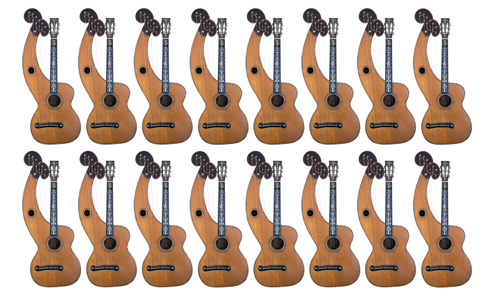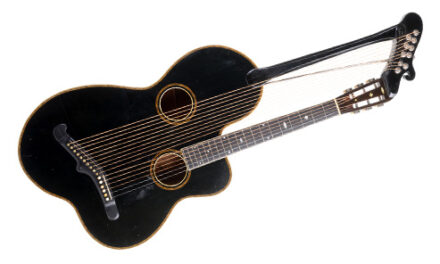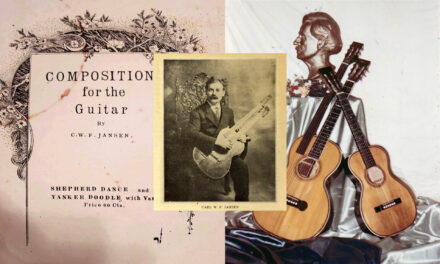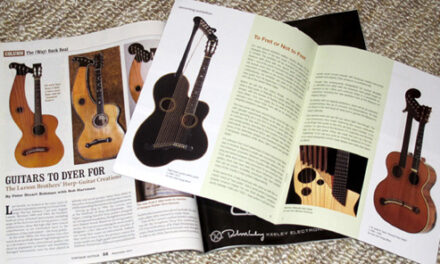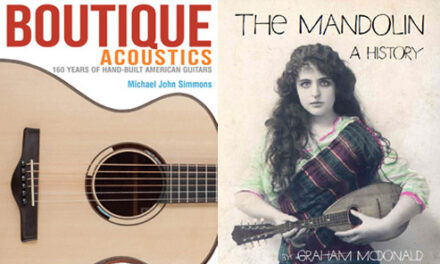…in which I get us up-to-date on the continuing saga of all the known surviving Dyer Style 8 harp guitars – an instrument that arguably remains the most coveted vintage harp guitar of all time.
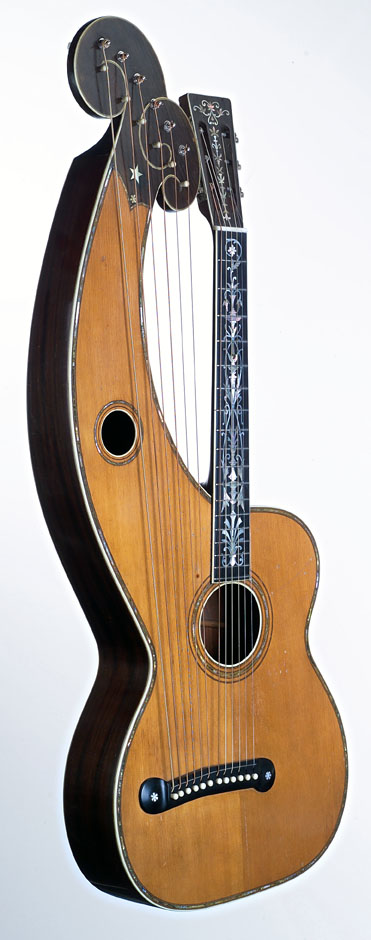
And “8 x 2”? That’s a double meaning in my cryptic mathematical blog title: In 2013, after selling a then newly discovered Dyer Style 8 harp guitar, I went through my records to discover that there are now exactly 16 confirmed Style 8’s in existence. I also observed (not for the first time) that the discoveries seem to occur – inexplicably, and often – in twos.
This latter observation is statistically curious…it was the fourth time (!) that I’ve noticed Dyer Style 8 harp guitars popping up (or changing hands) in pairs. Not in the same place, of course…it’s just that when one surfaces, another seems to immediately follow. Which is pretty remarkable, considering how darn rare they are.
How rare? Well, back in 2005, when Bob Hartman first shared with me his Dyer serial number list, there were exactly ten Style 8’s known – eight serialized, plus two with no number (much later, one of the two missing numbers was uncovered).
We now share the slowly growing list of those with serial numbers, whose numbers appear on my Dyer Dating page. The styles, owners (including when they change hands) and other details are kept in a private list Bob and I maintain. Unfortunately, we don’t (and can’t) keep track of the count of Dyers with missing or illegible labels; we only know there are a lot out there – though probably not quite as many as those with numbers. But we do think we’re aware of all of the Style 8’s.
Currently, of the roughly 550 Dyers ever built, there are about 125 serialized Dyer harp guitar specimens identified (with a couple discrepancies or question marks). Of these, 15 are Style 8’s. The 16th Style 8 is missing its label; a specimen that Bob owned in the ‘eighties and appears in his second and third book (shown below). Its current whereabouts are unknown (if anyone has a Style 8 they believe not in our count, please let us know!). The currently known serial numbers are 264, 690, 691, 749, 769, 783, 789, 809, 813, 831, 839, 843, 863, 869 and 913.
I was not remotely in the Dyer loop until 2005; here’s my history: I got my first Dyer from Norm’s Guitars in Tarzana (the original location, which appeared in “Spinal Tap”) – a Style 4 with finish so “alligatored,” it looked and felt like leather. At $2000 in the early ’90s, this was probably overpriced. I don’t believe it had a label. A year later, I traded it in to Gruhn Guitars for a National Tricone, after buying from Gruhn my Style 8 (#690, seen above), which, astounding even for back then, was a ridiculous steal at $4000 (!). It’s the one in the Gruhn/Carter Acoustic Guitars and Other Fretted Instruments book (though credited to the Gruhn store, it was actually on consignment, having been restored by Gruhn’s shop). As with everything back then, this was put on my VISA, paid off when I’d auction off one of my cherished Disney animation cels (to this day, when I play the Dyer, I can see Snow White at the window with the forest animals…).
But enough about me and my run-on parentheticals…
Meanwhile, I had discovered the first (really the 2nd) Larson book by Bob Hartman, and eventually started the Knutsen Archives, which necessitated having to learn a lot more about those pesky Larson-built Dyers (heck, unserialized, undocumented Knutsens were easier to date!).
Bob soon shared his private Style/Serial # list, at which time I started to get involved. Of course, Bob would always manage to locate and sell Dyer harp guitars that I was not privy to. It was Bob who sold the late Scott Chinery his Style 8 (#809), which I believe is one of the very few kept by Chinery’s widow.
The next Style 8 that I personally saw appear on the market (after my Gruhn specimen) was on the late Bill Camp’s Banjo site, where it sat at $35,000 for several years.
And here is where my “8’s always seem to come in 2’s” pattern started.
In late 2006, Bill Camp’s son finally accepted an offer on his Style 8, sold to a Larson collector in Las Vegas.
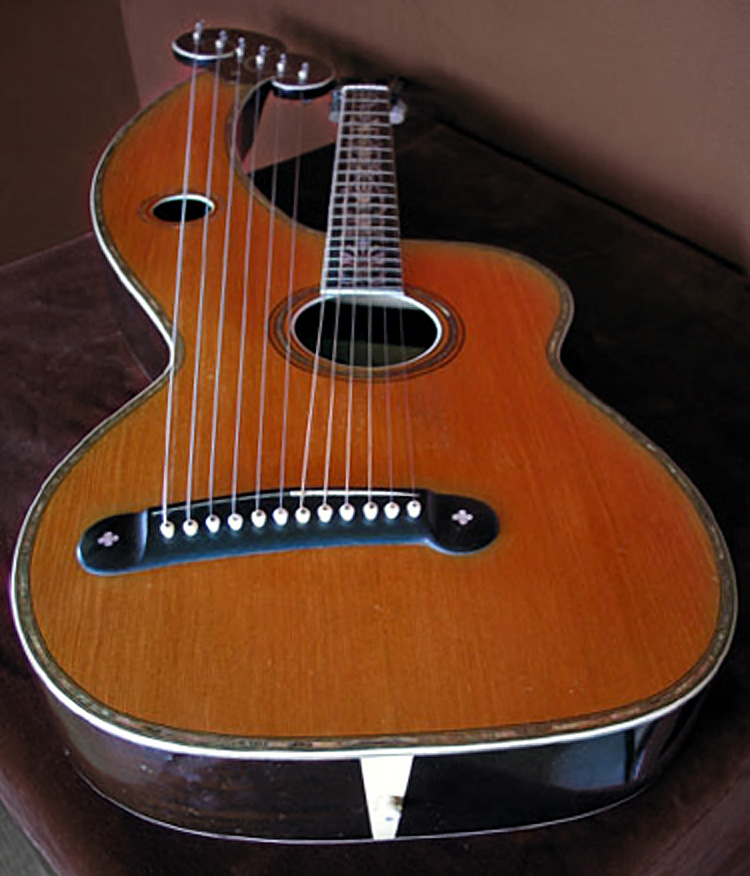
At this same time, Style 8 #264 was finally hitting the market – but privately – and I had first crack at it! This one (above) is interesting: It was sold by Mandolin Brothers way back in 1973 and was in fantastic shape. More importantly, it was unusual in having an extremely shallow body depth of just over 3-1/4 inches (others generally hover around 4”). Even as I tried to broker it, the same Las Vegas collector got wind of it and offered more than my buyers were offering (perhaps a record still). The upshot was that in less than six months in 2006, the only two available Style 8s came off the market.
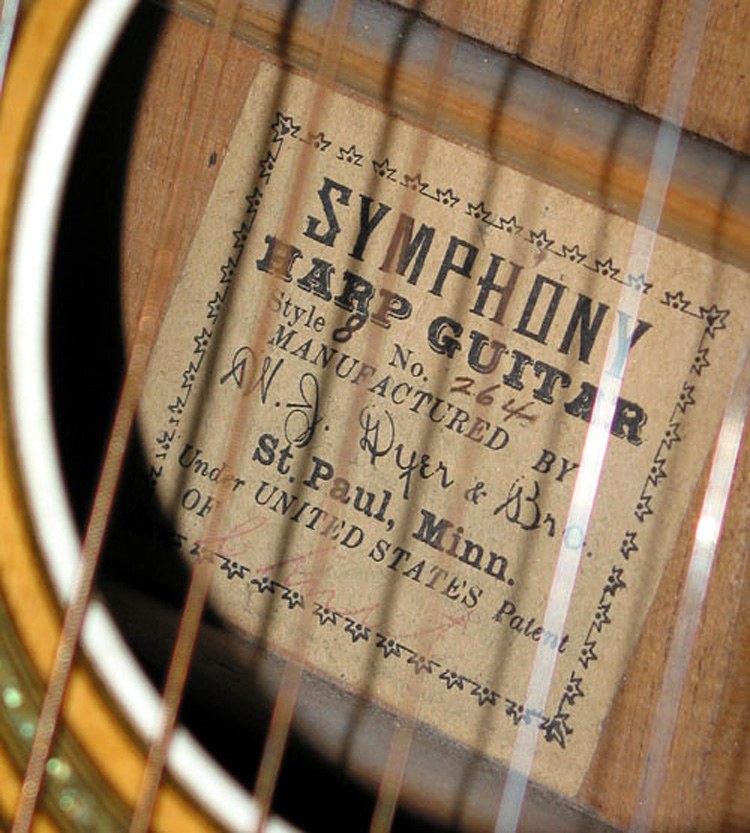
Would we ever see another specimen?
Actually, yes…two more, in fact. In 2007 and 2008 (a year apart), numbers 839 and 863 came to my attention from two private owners curious about value and insurance. Not interested in selling, as far as I know they both remain with their owners.
But would we see another one hit the market any time soon?
Things were definitely quiet – for two and a half years – when suddenly, two new specimens turned up simultaneously in the month of September 2010!
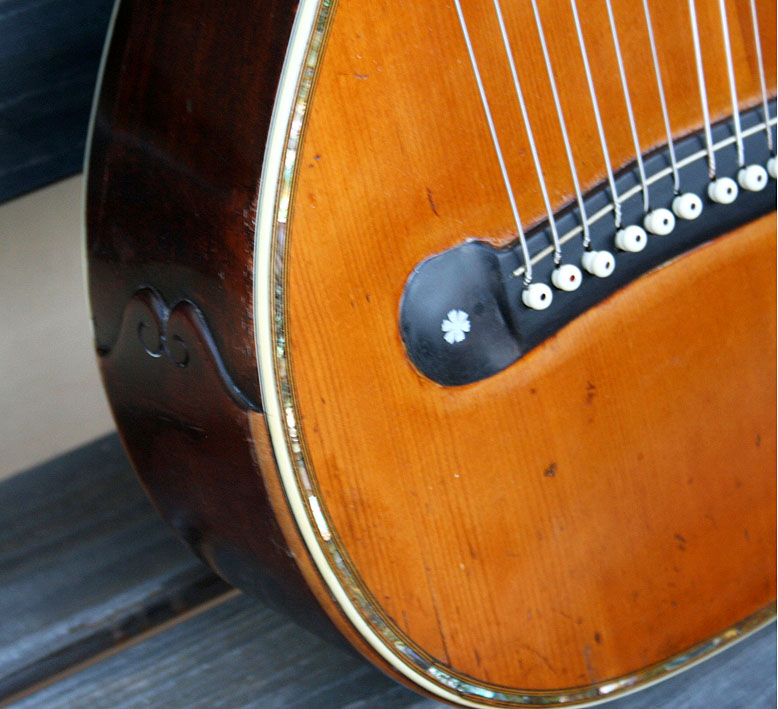
#691 (the serial number directly after my own Style 8) had been restored by Dexter Johnson and was being shopped by Tall Toad Music in Petaluma, CA (with David Grisman as “silent co-investor”). This is the one with the mysterious “sidewalls” that I blogged about here.
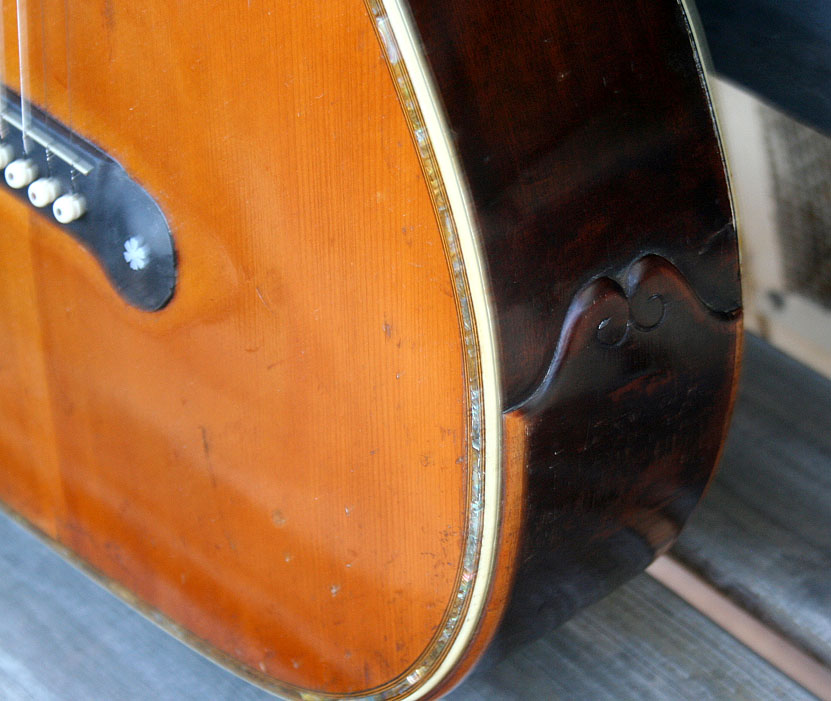
I watched it circle around to different dealers for years until it finally ended up at the Phoenix Musical Instrument Museum:
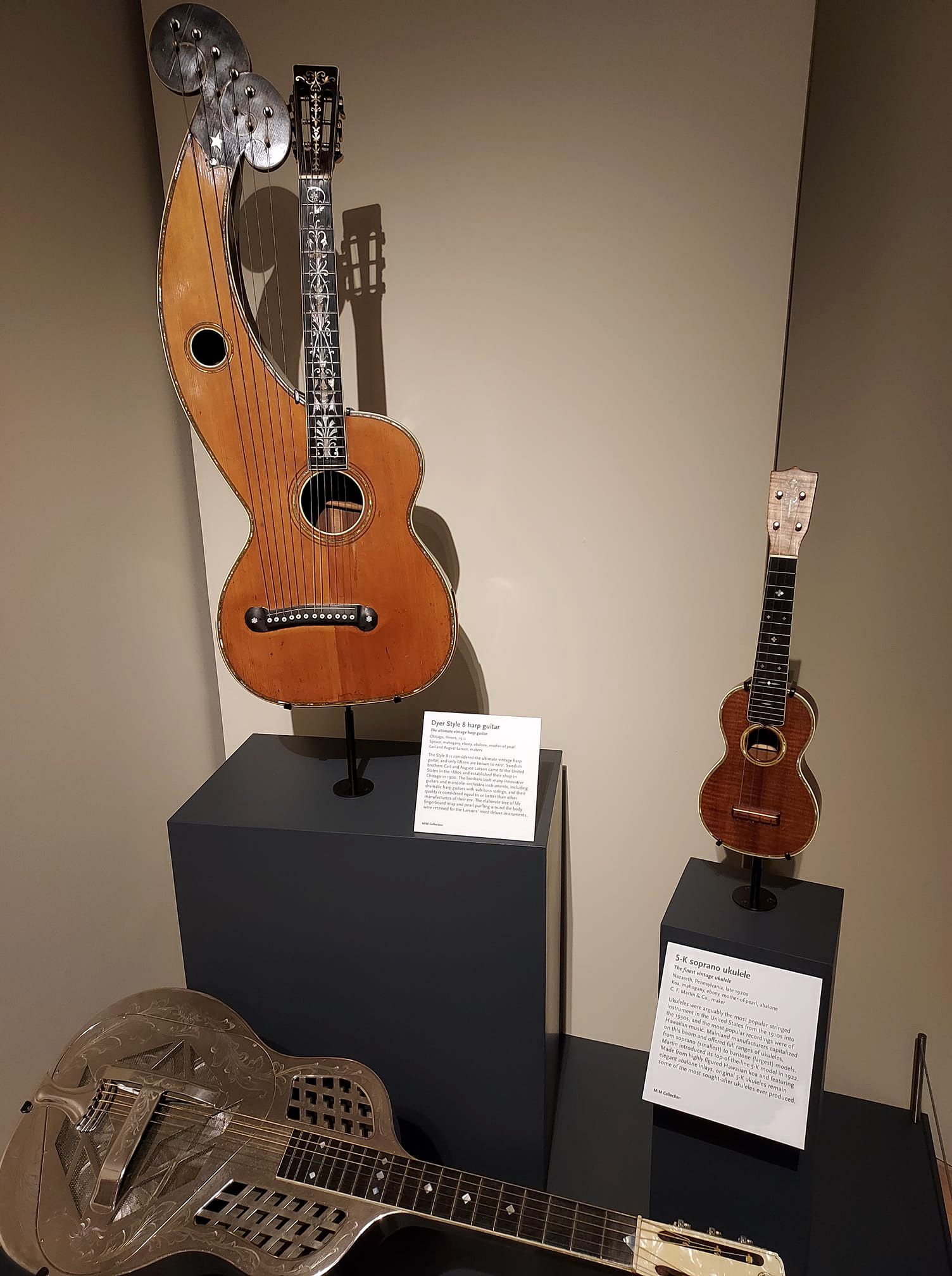
#789 – which I sold on Harp Guitar Music in just three days – came from a couple who had put it in a closet to keep it safe, only to have something fall off the shelf above and knock a big hole in the arm (D’oh!). Luckily, the piece was still there, and the buyer (a collector/player/investor in Florida) talked Kathy Wingert into doing the critical restoration (I didn’t get to see it but hear the old arm accident is now near invisible!).

This very instrument sold in early 2024 (below; selling price unknown, but the asking included a rather dramatic price increase!):

Then, another 2-1/2 years rolled by…when, again – just when I was despairing that the Style 8 might have to be upgraded from “endangered” to “extinct” – another two turned up!
The first was when the owner ordered strings from me, and it developed that her harp guitar was Dyer Style 8 #769. This one, too, will remain with the family.
The final, sixteenth-known Dyer Style 8 came out of the woodwork just a couple weeks after 769. It took some time to hook up with the owners, but I finally snagged #749 for consignment and sold it in 2013:
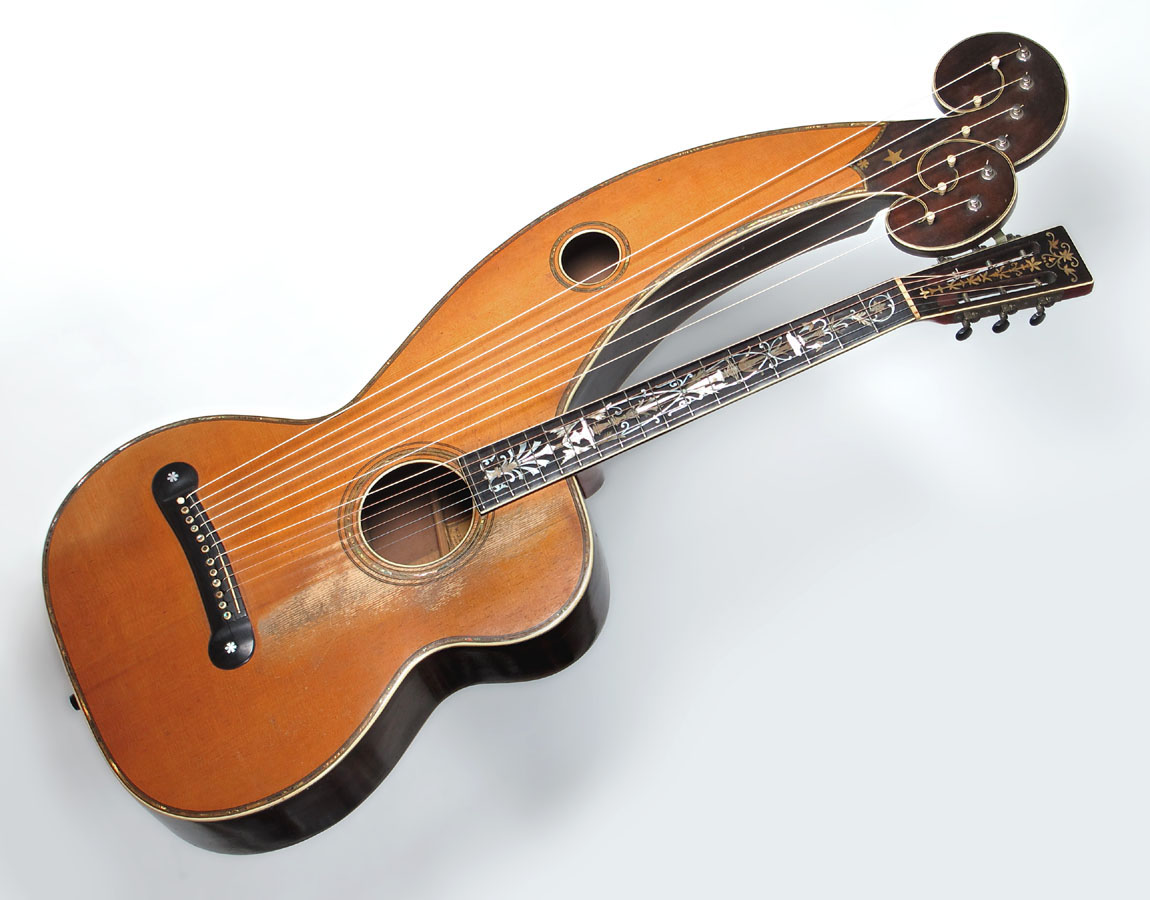
A few more interesting Style 8 tidbits: It’s certainly interesting to note that all but two of the known serialized specimens were built after the 600-series transition (my current vote on guessimating the time frame of this transition is c.1908). With this fact and the next instrument in mind, the thinline #264 that I showed above seems an anomaly. So much so that I am now fairly certain that it was a later model that found itself with an older, pre-serialized, pre-signed Knutsen label – though that may sound unlikely, I believe it happened (Hey, Carl, I just found this old label under your desk! What the h…?!”).
In fact, I believe this unlabeled instrument from Bob’s early books (B&W at left and color below) is the sole pre-c.1907-era Style 8 known:
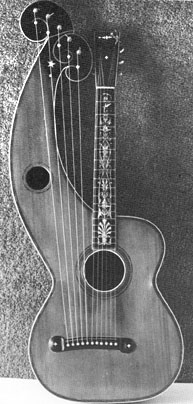
It has just five sub-basses, always a sign of an earlier instrument, it has simpler Style 7 inlay on the headstock, and its binding is without abalone. In fact, its purfling and binding resemble the simplest Style 7’s of that era.
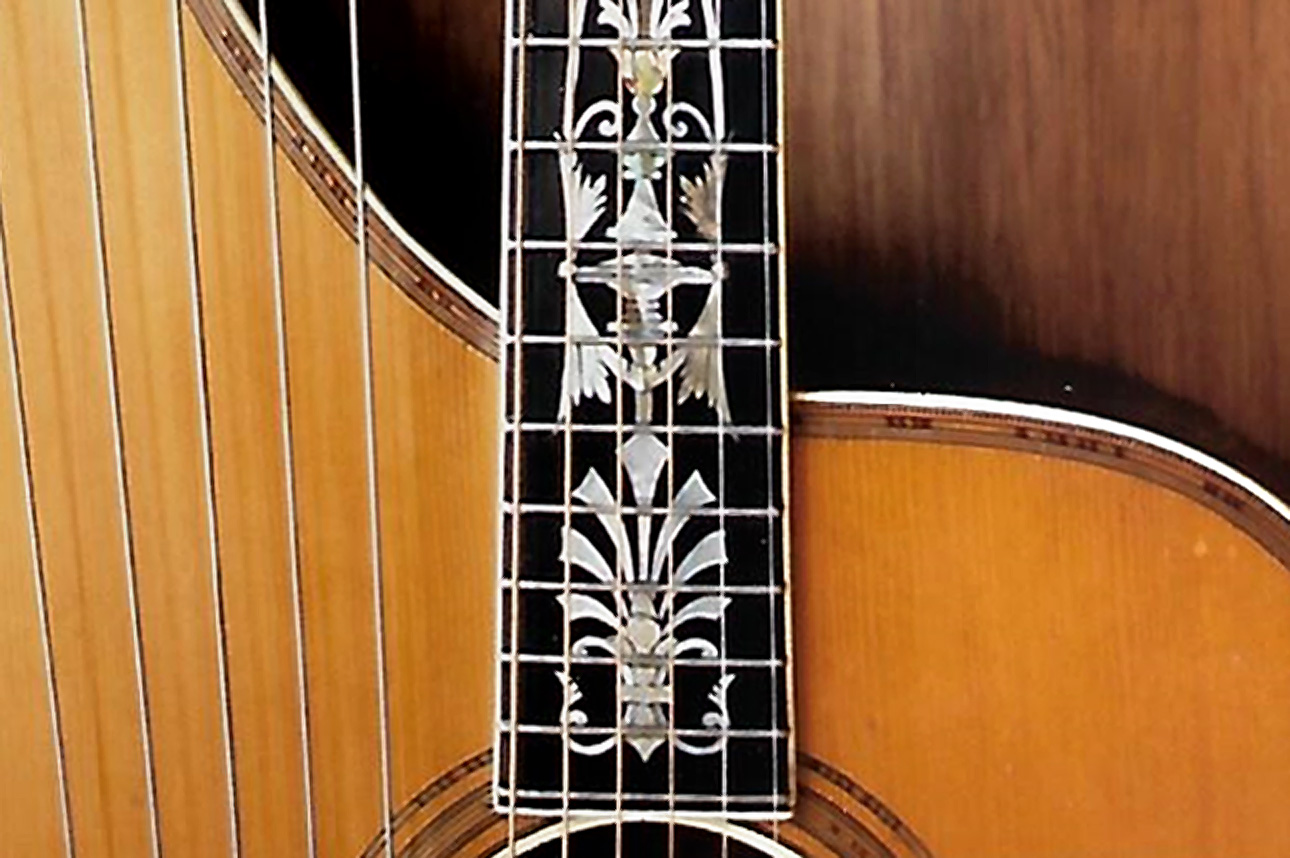
From the oldest Style 8 to the latest:
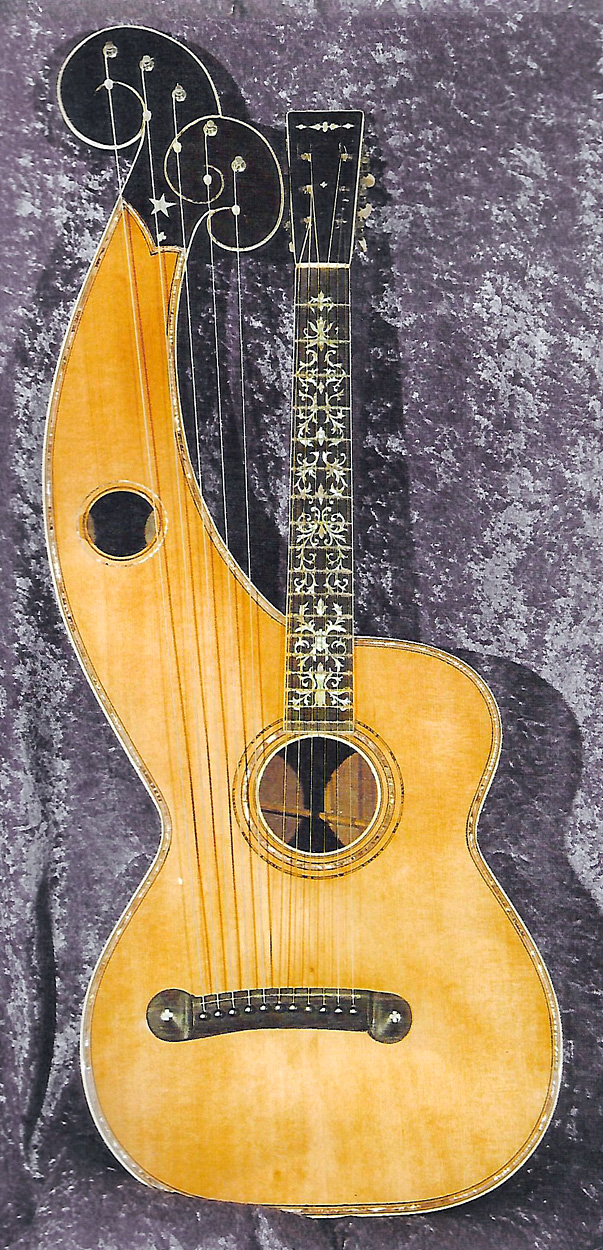
#913 formerly owned by Hank Risan. Ironically, it reverts back to the Style 7 headstock inlay (and back to just five sub-basses, perhaps a custom order?), while also incorporating a different “tree-of-life” fingerboard inlay pattern. Interesting!
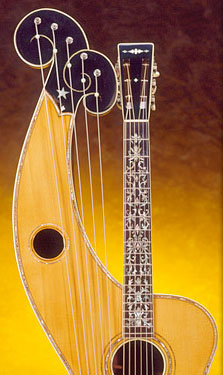
Bob Hartman says that this is the first appearance of this pattern on a Larson brothers instrument; it would later be seen in a c.1932 Maurer/Prairie State catalog. It may have been the last time it was seen on a Dyer, as this is towards the end of our current serial number series. Circa date? The number puts it at c.1919 in my chart, but there’s really no precise way to know – theoretically, this instrument could have been built anywhere between the late ‘teens and the late ‘twenties. However (as you’ve already read in my billion-word Dyer Dating article), I think that Dyers – at least new orders – went the way of the Dodo somewhere around 1920.
Of course, my favorite Style 8 remains #843, which may or may not be the infamous “Valentino Dyer.”

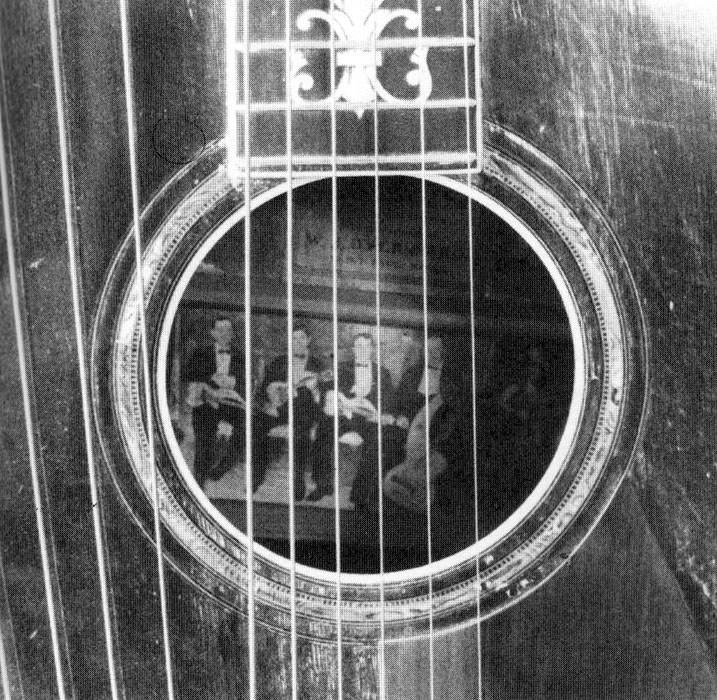
This unusual dark-stained Dyer appeared in Bob’s second book, though the serial number was not recorded or added to our list until recently. I was always intrigued by its special second “photo label” until I realized that the original owner likely just cut the image out of their November, 1910 Cadenza magazine issue and pasted it in there because they thought it looked cool.
The color photo above came from the late Stan Jay at Mandolin Brothers, who way back either bought it from or sold it to someone in the ’60s group Kaleidescope, likely Chris Darrow (below).
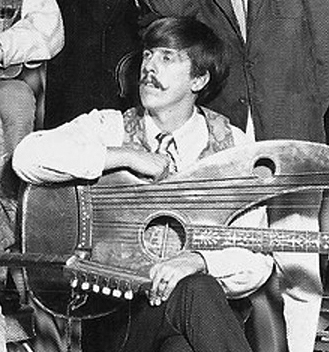
In any event, Darrow ended up with it the majority of photos with the group, that also included the late David Lindely with his Gibson. We can assume this is the very same instrument not only from the rare dark finish but because we can easily see that Cadenza photo through the soundhole.
OK, I think that gets me – and you – up to date on the Style 8 Dyer harp guitar saga…
…until the next two show up!
(Note: Though I greatly updated this article in March 2024, the count remains the same…)

